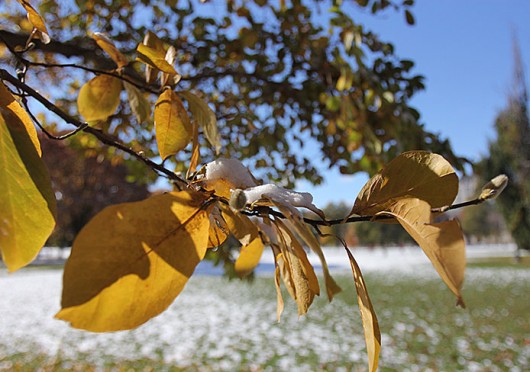The shade on Columbus’ campus has become a little more scarce after two trees were removed near the Ohio Union.
Removal of trees prevents spread of disease and allows for campus improvement, said Lindsay Komlanc, OSU Administration and Planning spokeswoman.
“When we remove trees, it is primarily due to disease or insect damage, but at times also due to construction,” Komlanc said in an email. “Occasionally, we have lost trees due to car or truck damage.”
When OSU takes on large, time-intensive construction projects, though, Komlanc said it’s possible to plan ahead so as not to harm the trees in the area.
“(The South Oval) is a good example of where we were able to plan around our trees,” Komlanc said. “The wells were held away from the drip lines of the trees (edge of the tree’s canopy) … there should not be any negative effect on the trees.”
The South Oval was closed in November 2010 because of the installation of geothermal wells that aim to improve the heating and cooling systems of South Campus residence halls.
Though the initial targeted completion date was September 2012, problems with the drilling method in relation to the South Oval geologic condition delayed the project end date by more than a year.
Chesapeake Geosystems, Inc., the company initially under contract for the renovation, was released from its obligations because of its ineffective methods, according to The Lantern archives. The project originally cost $10.3 million and was expected to pay for itself in about 10 years, but the budget jumped to $12 million because of the delays and was completed by Bergerson-Caswell.
Recently, though, two dead or declining trees near the Ohio Union and along the west side of Tuttle Park Place were removed and plans have not been announced to replace them, Komlanc said.
Some students, however, said no matter what, replacing every tree is unrealistic.
“It would be nice to remove a tree, plant a tree, but it isn’t feasible,” said Andrew Castonguay, a molecular genetics graduate student. “Removing a few trees out of how many on campus probably makes zero difference.”
The cost to remove a tree on campus can vary. The cost of removing Ash trees can range from $375 to $2,150 depending on the age and size of the tree, according to a 2011 environmental benefits analysis of trees for Ohio State’s Columbus campus. The report was compiled by the Why Trees Matter Committee.
In 2012, more than 900 trees were planted, Komlanc said.
She said there are many benefits having a variety of trees on campus.
“We want campus to be an aesthetically pleasing place that our students, faculty, staff and visitors enjoy,” Komlanc said. “We are also very committed to stainability efforts and reducing our carbon footprint.”
Trees improve the air quality, assist with carbon sequestration, and reduce storm water run off, so overall, trees can save money for the university, according to the environmental benefits analysis.
For some students, though, it’s about the aesthetic appeal of the trees.
Ismail Oukhouya, a second-year in business who transferred from West Virginia University for Spring Semester, said trees leave an impression and make OSU’s campus memorable.
“I just transferred and I was impressed by the landscape on campus, I can’t stop smiling,” Oukhouya said. “The tree coverage is more extensive here.”
Between 1995 and 2005, 11,654 trees were counted on campus and in 2011, the university was planning to recount for more modern data, according to the environmental benefits analysis.



